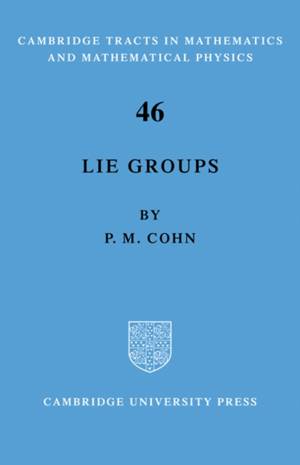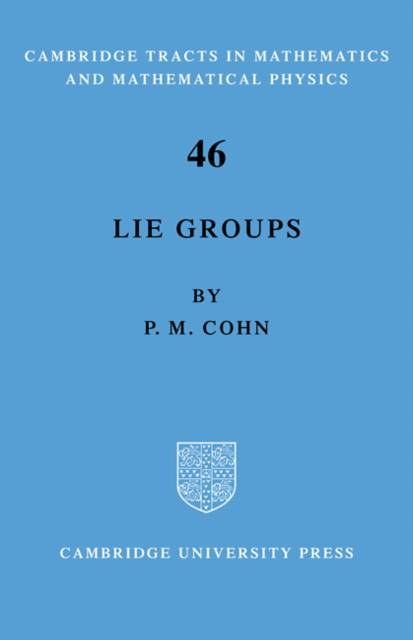
- Afhalen na 1 uur in een winkel met voorraad
- Gratis thuislevering in België vanaf € 30
- Ruim aanbod met 7 miljoen producten
- Afhalen na 1 uur in een winkel met voorraad
- Gratis thuislevering in België vanaf € 30
- Ruim aanbod met 7 miljoen producten
Zoeken
Omschrijving
The theory of Lie groups rests on three pillars: analysis, topology and algebra. Correspondingly it is possible to distinguish several phases, overlapping in some degree, in its development. It also allows one to regard the subject from different points of view, and it is the algebraic standpoint which has been chosen in this tract as the most suitable one for a first introduction to the subject. The aim has been to develop the beginnings of the theory of Lie groups, especially the fundamental theorems of Lie relating the group to its infinitesimal generators (the Lie algebra); this account occupies the first five chapters. Next to Lie's theorems in importance come the basic properties of subgroups and homomorphisms, and they form the content of Chapter VI. The final chapter, on the universal covering group, could perhaps be most easily dispensed with, but, it is hoped, justifies its existence by bringing back into circulation Schreier's elegant method of constructing covering groups.
Specificaties
Betrokkenen
- Auteur(s):
- Uitgeverij:
Inhoud
- Aantal bladzijden:
- 176
- Taal:
- Engels
Eigenschappen
- Productcode (EAN):
- 9780521092982
- Verschijningsdatum:
- 8/01/2009
- Uitvoering:
- Paperback
- Formaat:
- Trade paperback (VS)
- Afmetingen:
- 140 mm x 216 mm
- Gewicht:
- 231 g

Alleen bij Standaard Boekhandel
+ 161 punten op je klantenkaart van Standaard Boekhandel
Beoordelingen
We publiceren alleen reviews die voldoen aan de voorwaarden voor reviews. Bekijk onze voorwaarden voor reviews.











